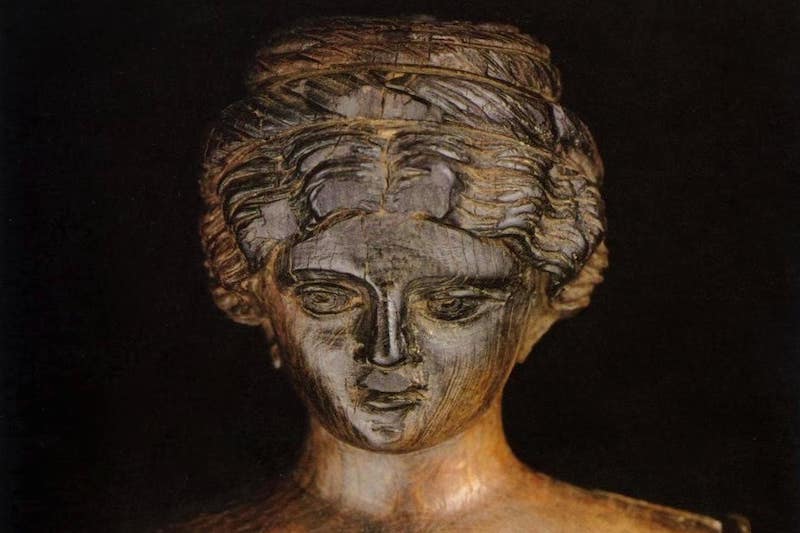Why Did Girls Play with Dolls in Ancient Rome?
An unexpected discovery was made in Rome in the late 19th century. Two side-by-side sarcophagi containing the nearly 2,000-year-old remains of Crepereia Tryphaena and Crepereius Euhodus were unearthed. Two members of the family were buried in an extraordinary place, namely the Imperial Gardens of Domizia.
The extraordinary nature of the discovery, which aroused public interest, lies in the “original” roots of the individuals buried in the tomb, as the Crepereii family had their origins in a wealthy family that had once been freed from slavery, and yet their family members were buried on an imperial estate. This unique honor was bestowed upon the Crepereii family after his death, most likely in tribute to the family’s leading role in the administration of the imperial estate.
Yet it wasn’t the “exotic” origins of the Crepereii family that got the most excitement, but Crepereia’s flamboyant and influential burial, for she was buried with her doll.
Born to marry
The childhood of Roman girls did not last long. While Roman law ruled that girls could not marry before the age of 12, this age limit was actually based on men’s “wide-ranging” observations of women’s puberty. Although girls from the age of 12 were considered physically, socially and legally eligible for marriage, most Roman girls were married, usually at a later age, ie from the age of 15.
At a time of high infant mortality rates, Roman families took advantage of the fertility of their daughters at a time when childbearing was already dangerous, even though giving birth was often a deadly process for infants.
Early marriages, especially between powerful families, were often made as a means of establishing interdynastic alliances, but also to ensure that the woman did not have a sexual history that could show her husband as humiliating.
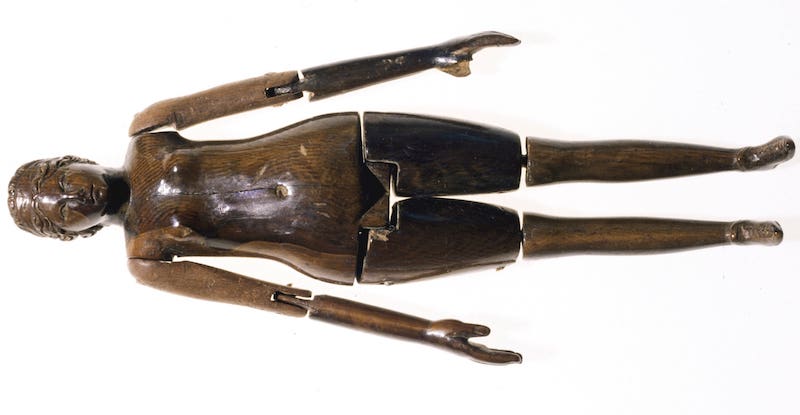
“In ancient Rome, ‘respectable’ women had to conform to a very precise ideal of women, built entirely around the union of the family and marriage. Nadia Agnoli, curator of the Capitolini Museums, the final resting place of the Crepereii family, “was thought that women, no matter their age, could reasonably look after themselves and had to be under permanent male authority.” says.
Despite their legal status as “underage”, women were expected to take on adult roles, including caring for children, running the household, often helping with family chores, and supervising slaves if the family could afford it.
But before all these responsibilities, there was a wedding ceremony to lay the foundations of marriage. On the eve of the wedding, the bride-to-be was expected to put aside all childish things by dedicating her toys to the house gods; and thus a woman would emerge from this transition.
For the young Crepereia, the Moirai (the Goddess of Fate group consisting of 3 Goddesses in Ancient Rome) made a different decision; The very “stubborn” goddess of Moirai, Atropos, determined the moment of death of young Crepereia by cutting the thread that determined the length of her life early. Therefore, Crepereia, who had left this world as a girl, should not have left her doll.
However, the two rings found in Crepereia’s sarcophagus indicate that the young girl was previously engaged by her parents, even if she was not yet married. Crepereia’s family, on the other hand, may have decided to reunite her with her favorite doll after her death.
“Crepereia was a young woman no older than 20, perhaps married or newly engaged. The red jade seal engraved on a figure with interlocked hands was perhaps her wedding ring, and the name ‘Filetus’ engraved on the other ring could be the name of her husband or fiancee.” explains Agnoli.
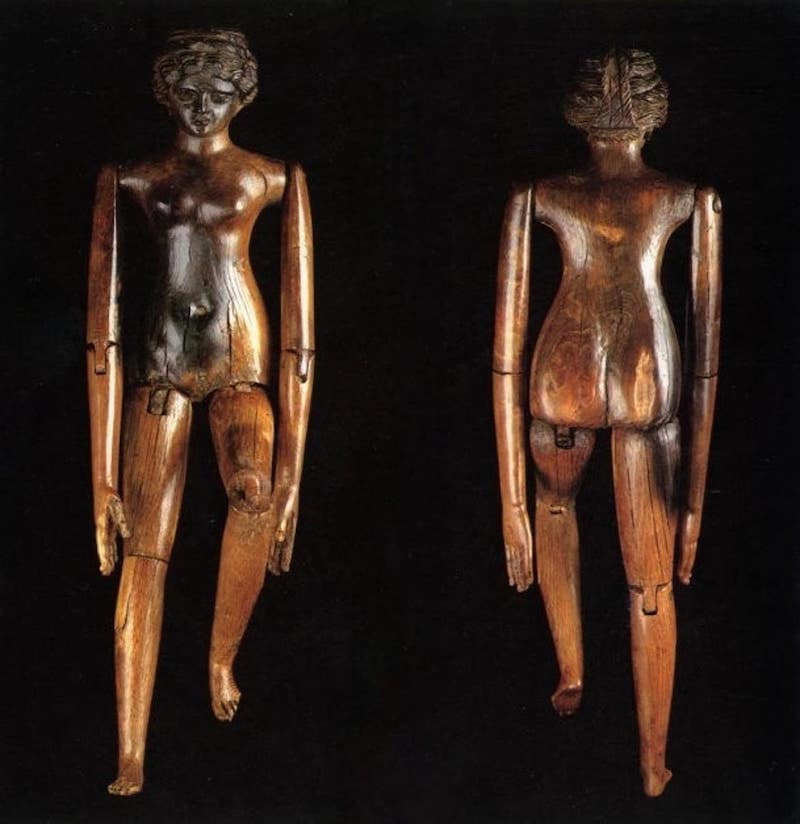
‘Barbara’ vs. Barbie
Crepereia’s lifeless body lay on its side with its head tilted towards its doll friend. This exquisitely crafted ivory doll (thought to have probably been made in Alexandria) had articulated limbs that could be moved and bent, similar to dolls that girls play with today.
The doll was also accompanied by miniature items such as small mirrors, delicate clothing, and precious ornaments for the girl to dress up. “These dolls were made only for the children of very wealthy families, and among such dolls the incomparably delicate one was Crepereia’s doll. Standard dolls made of fabric or other materials were more simplified versions of Crepereia’s dolls and did not show anatomical details.” says Agnoli.
Similar types of dolls have been found in tombs, often with their own miniature grave goods equivalent to those of the deceased. Crepereia’s doll, with its youthful feminine features, plump lips, soft nose and large almond eyes, reflects by far the most idealized female form, while dolls such as the Grottarossa doll, which is thought to belong to an 8-year-old child, with carefully crafted facial details and “oversized” body lines perhaps it was conceived as a more “motherly” version that sought to demonstrate the protective qualities of motherhood.
Crepereia’s doll, which we can call “Barbara” with its naturalistic body lines, contrasts greatly with the “different” body proportions of today’s dolls.
Although Barbie, with her eternal and “perfect” body image, was a representation of a grown woman, with her waist smaller than her head and almost non-existent hips, she was not made to emphasize that she could be a future mother to children. Mattel Inc., the creator of Barbie, stated that the doll was never designed to replicate the adult figure, but that Barbie’s clothes were designed to be easily put on the doll. So if Barbie isn’t an adult, why does she have prominent breasts?

Undoubtedly, it is thought that a Barbie doll with the body proportions on which Mattel is based, if it were real, would only have half a liver, would not have menstruation (an important sign of maturity for the Romans), would not be able to walk normally on all fours except crawling, and could not even hold her head up high. . Thus, all the comfort that a normal human body can provide is sacrificed for fashion in a doll.
Child psychology experts will not be impressed by the fact that Barbie’s unrealistic body features are defended by the manufacturer, which some accuse of causing eating disorders in young girls. As an example of the situation, 5-year-old girls reported that they were dissatisfied with their own bodies and wanted to be slimmer when they grew up.
The realistic body form of the ancient “Barbara”, who can be considered as the Roman ancestor of Barbie, is unlikely to contribute to the deterioration of the body image of young girls; however, this realistic female image of “Barbara” also implied the possibility of young Roman girls being adult women who await and rapidly approach in the future.
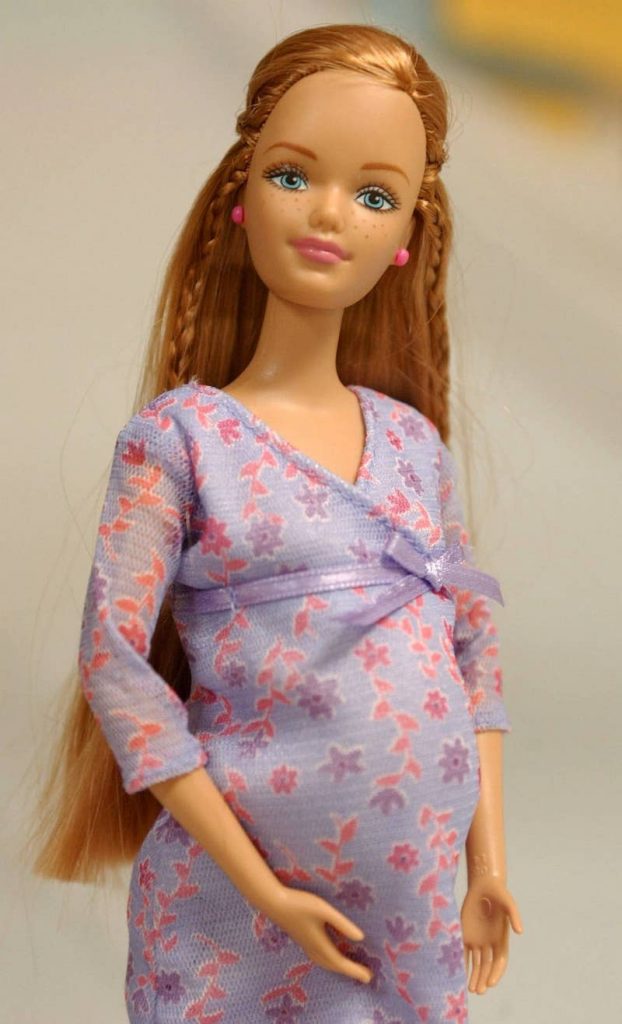
Divine fertility
Mattel’s attempt to make things more “real” went awry when Barbie’s best friend Midge began being produced. In the story of baby Midge, Midge has been married to Alan since 1991. The happy couple soon welcomed Ryan doll, conceived as their 3-year-old son, into their doll family. In 2002 the couple “announced” that they were expecting their second child, a girl, named Nikki (Midge doll has a removable magnetic belly button on her belly that allows for an easy and clean “birth” of her child).
A representative from Mattel company says on Barbie’s official website that “Happy Family” dolls are designed for girls aged 5 to 8 years, it can be “a great support for parents to use with their children to rejuvenate family situations, especially in families awaiting the arrival of a new sibling.” explained, but later this explanation was removed.
Midge, with her freckled face, braids, and floral dress, seems to represent a teenager in adolescence. That’s why Mattel’s initiative was not well received by parents who were worried and worried that the brand was promoting teen pregnancy.
While Crepereia’s baby was not depicted as pregnant, the baby’s round fertile belly and life-giving wide hips were meant to “prepare” Crepereia for the most precious role a woman could have had in the ancient world: being a mother. But to be not just any mother but a respectable mother: The baby’s elaborate hairstyle was an elegant replica of the hairstyle popularized by the fashion icon of ancient Rome, Empress Faustina the Younger.
“In ancient Rome, the standards of women’s fashion were set by the women of the imperial family, and even dolls were designed to be trendy… just like Barbie!” says Agnoli.
Emperor Marcus Aurelius, in his Reflections on Myself, describes his wife, Faustina the Younger, as “obedient, loving, and simple.” The concept of children was not foreign to Young Faustina, who was married to the 24-year-old emperor when she was 15 and mothered at least 14 children in 21 years.
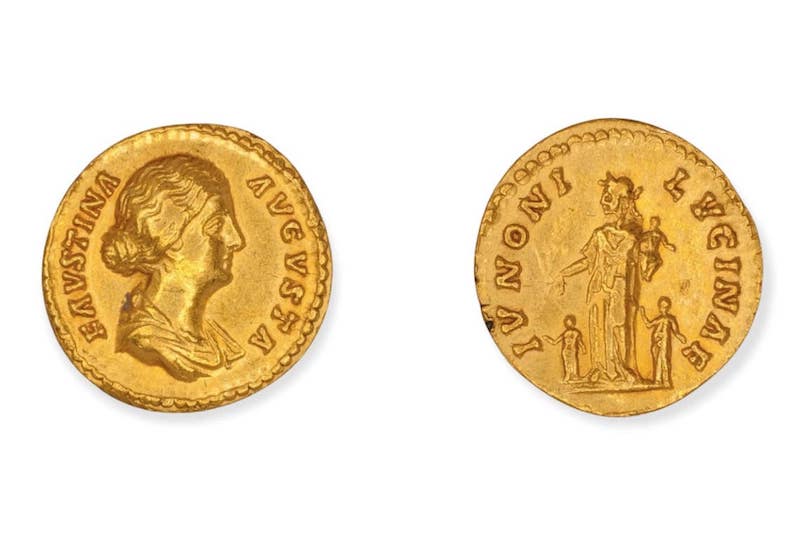
Only six survived to adulthood: five daughters and a son, Commodus, who was “somewhat” psychologically unstable. Commodus is mostly known for his clothing choices (dressing like a gladiator) and his unhealthy (even by old standards) fascination with gladiator games.
With the birth of her first child in AD 147, the Senate granted Faustina the title of Augusta, the highest title a woman could hold in the Roman world, before her husband became Augustus in 161. However, the propaganda of the palace circle did not end there. Faustina’s role as a mother was publicly glorified, and with the birth of her daughter Fadilla, coins were minted depicting Faustina as the goddess Juno Lucina, who privately watches over all aspects of women’s lives, including childbirth. Just a year later, she received the glorious title of Fecunditas Augustae (“Fertility of Augusta”) for her divine fertility.
Despite the rumors of infidelity circulating, young Faustina was publicly represented as the personification of the ideal woman; namely the type of idealized woman that Crepereia’s doll aims to represent: Beautiful, elegant and fertile.
In addition to the obvious physical differences between Barbara and Barbie, the dolls unwittingly share some things in common: Despite the thousands of years of age difference between them, the dolls both represent adult women and were both designed by men who fashioned versions of women ideal for girls to play with. .
“Crepereia’s doll had the function that Barbie dolls do today: that girls imitate the behavior of adult women,” Agnoli said. says.
The “Barbara” dolls of ancient Rome were designed for a specific purpose: to meet these demands of Roman girls by imitating and playing with the adult female figure they admire and dream of becoming one day. Being a respectable wife and mother was “touted” by men as the most important role a woman could have in Roman society, and Crepereia’s doll was the model doll to portray her.
haaretz. 14 December 2021.

